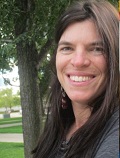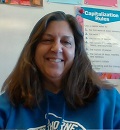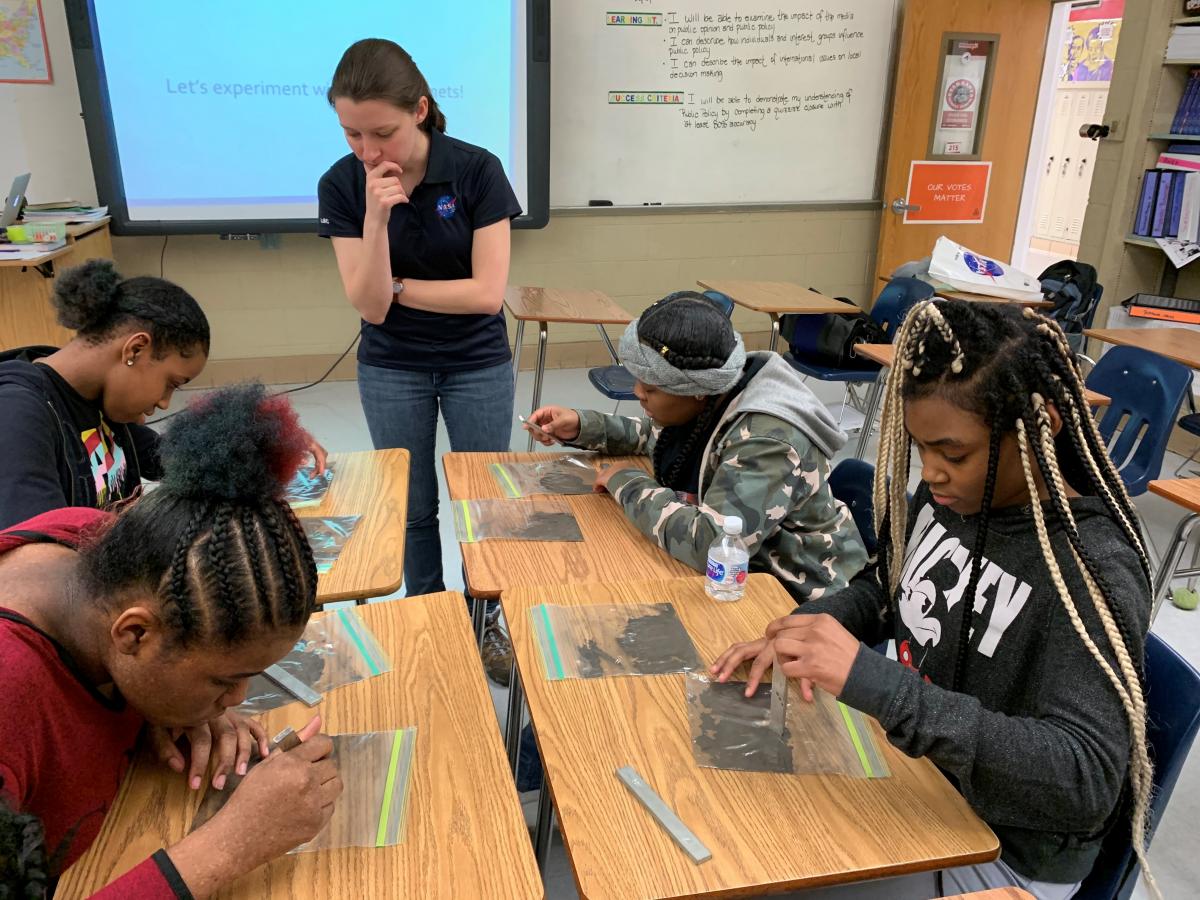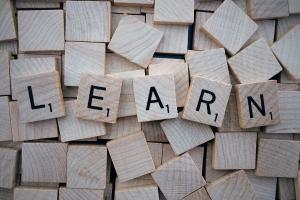By Emily Miller and Mary Modaff
Posted on 2020-03-24
The kindergarteners waited excitedly outside the door, anxious to see the toys my third graders created for them. My third graders were equally excited to share their toys and use science ideas to explain how their toys moved. The engagement and enthusiasm demonstrated by my students during this science unit on forces and motion were just two of the factors that changed my attitude and beliefs about science instruction in elementary school.
Science hasn’t always been my strongest area of instruction. I used to review our curriculum with its predetermined conclusions, cross my fingers, and hope our experiments produced the desired outcome. That changed with the introduction of the Next Generation Science Standards (NGSS), Project-Based Learning (PBL), and a focus on student discourse.
The discourse supports embedded in the PBL units help place students’ questions and science ideas as the drivers of sensemaking: This is a key feature of storylines. This new science focus also incorporates the use of literacy and math skills in a real-world context, helping students find answers to questions about the world in which they live. For the first time, authentic problems allow students to apply math.
I have found my students’ engagement in science and my enthusiasm for teaching science have increased significantly over the past few years as a result of implementing this new approach of students developing and building on science ideas over time. Instead of questioning my personal knowledge and science teaching strategies, I’ve found that I am comfortable posing a driving question and having the students explore from there. I’m not as concerned about getting to the right experimental outcome and trying to fill their heads with specific content knowledge. Students are able to question, observe, discuss, investigate, and experiment to explore science phenomena, rather than do an experiment to see if they reach the correct conclusion.
We are currently using a PBL curriculum developed by Joe Krajcik and his team at the CREATE for STEM Institute at Michigan State University. Each unit we do has a driving question that piques the students’ interest. The question “how can we design fun moving toys that other kids can build?” drives our investigation on forces and motion. Children build movable toys using primarily recycled items (used milk cartons, water bottles, and so on). It is by using these toys that many of their investigations take place.
Students learn to apply ideas about pushes and pulls, balanced and unbalanced forces, friction, and magnetic and electrical forces by describing how they impact the movement of their toys. They also become engineers when planning, designing, and making changes to their toys. They share their first toy models with a group of kindergarteners, then share their final designs with the same group at the end of the unit. This final showcase of toys is a rewarding experience for my students and a fun time for the kindergarteners, who play with the toys.
How did we get here? We started with the driving question, using a rocket to engage with a familiar phenomenon: the predictable arc of the rocket’s path across the length of our classroom. Students made claims about what is predictable about motion, then used measurement as evidence to support those claims. Finally, they engineered a change to that motion using magnets, static electricity, or an innovative car design.
For example, students predicted that additional weight taped to one side of their car would change the direction of motion, and that adding magnets would impact the balance of forces. Throughout the investigation, the students understood that they knew a lot to begin with, and they also were knowledgable about how toys move. They started the unit with their own expertise and their experiences using these moveable toys, which led to more questions and further investigations.
They didn’t need to rely on me to answer their questions. They were able to discover many of the answers through their own investigations, observations, and research. And in the end, my third-grade students become teachers themselves by showing and explaining their discoveries to the kindergarteners. Storylines describe this arc as a projection of learning.
Storylines are essentially the learning trajectory of Project-Based Learning. They initially began before the NGSS with an innovative middle school curriculum funded by the National Science Foundation in the 1990s. They are PBL road maps that predict student curiosity and incorporate students’ prior understanding of the world. PBL storylines anticipate how to start with students’ interests and extend learning as a trajectory that places students’ questions at its center.
These CREATE for STEM units from Michigan feature storylines that have a unique aspect: They allow for, even embrace, flexibility in enactment because the contexts can’t always be anticipated beforehand. For example, I taught this unit at the same time that many students were playing on ice and snow outside at recess. I needed to adapt the unit to incorporate questions about sliding on surfaces.
I think of PBL storylines as the banks alongside a river. The banks constrain movement of water as the river flows. Along the way, the river has deep and shallow stretches, and bends and inlets, and moves more quickly and more slowly as a result of the changing topography. While the storyline moves us forward, the flexibility of the units allows me to respond to my students’ needs. Using the NGSS with storylines has taught me how to be a better science teacher and continues to strengthen my students’ foundation in science as I use their questions to drive the instruction.
The PBL curriculum was part of a research project funded by Lucas Educational Research (http://www.lucasedresearch.org).

Emily Miller is a research associate and professional learning facilitator for schools across Wisconsin. She co-wrote Appendix D of the NGSS, and participated in the development of the NGSS as a member of the writing team for elementary performance expectations. Miller believes it is possible for teachers and students to enjoy teaching and learning science, especially by promoting creativity and active sensemaking, and that moving classrooms toward more equity is both enjoyable and deep learning.

Mary Modaff is a third-grade teacher in the Madison (Wisconsin) Metropolitan School District. This is her fifth year teaching science using the NGSS. She has also provided professional development on the NGSS and the CREATE for STEM Science Curriculum to other elementary school teachers in the Midwest.
Note: This article is featured in the March 2020 issue of Next Gen Navigator, a monthly e-newsletter from NSTA delivering information, insights, resources, and professional learning opportunities for science educators by science educators on the Next Generation Science Standards and three-dimensional instruction. Click here to sign up to receive the Navigator every month.
Visit NSTA’s NGSS@NSTA Hub for hundreds of vetted classroom resources, professional learning opportunities, publications, ebooks and more; connect with your teacher colleagues on the NGSS listservs (members can sign up here); and join us for discussions around NGSS at an upcoming conference.
The mission of NSTA is to promote excellence and innovation in science teaching and learning for all.
 This web seminar will provide an overview of the seasonality, timing, and risks associated with Tropical weather systems. We will provide a broad cursory examination of the meteorological and climatological factors that underpin the challenges of forecasting these unique storms.
This web seminar will provide an overview of the seasonality, timing, and risks associated with Tropical weather systems. We will provide a broad cursory examination of the meteorological and climatological factors that underpin the challenges of forecasting these unique storms. This web seminar will provide an overview of the seasonality, timing, and risks associated with Tropical weather systems. We will provide a broad cursory examination of the meteorological and climatological factors that underpin the challenges of forecasting these unique storms.
This web seminar will provide an overview of the seasonality, timing, and risks associated with Tropical weather systems. We will provide a broad cursory examination of the meteorological and climatological factors that underpin the challenges of forecasting these unique storms. This web seminar will provide an overview of the seasonality, timing, and risks associated with Tropical weather systems. We will provide a broad cursory examination of the meteorological and climatological factors that underpin the challenges of forecasting these unique storms.
This web seminar will provide an overview of the seasonality, timing, and risks associated with Tropical weather systems. We will provide a broad cursory examination of the meteorological and climatological factors that underpin the challenges of forecasting these unique storms. This web seminar will provide an overview of the seasonality, timing, and risks associated with Tropical weather systems. We will provide a broad cursory examination of the meteorological and climatological factors that underpin the challenges of forecasting these unique storms.
This web seminar will provide an overview of the seasonality, timing, and risks associated with Tropical weather systems. We will provide a broad cursory examination of the meteorological and climatological factors that underpin the challenges of forecasting these unique storms.





 How do you keep students from losing attention when you’re teaching difficult science terminology?
How do you keep students from losing attention when you’re teaching difficult science terminology?